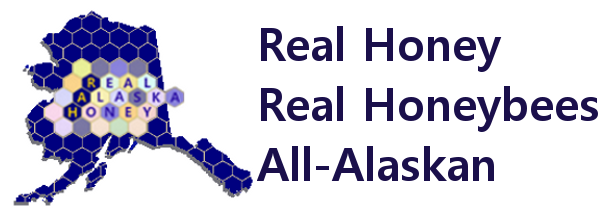A quick Google search of Neonics and honeybees will give you a long and through reading list about the reasons why neonicotinid pesticides should be banned. Alaska is a little different than other states, since the use of pesticides are probably considerably lower, since agriculture is a much smaller part of our economy. Regardless, these pesticides are widespread in Alaska, particularly in urban areas where they are sold for home use.
As an urban, treatment-free beekeeper, I am completely aware that my honey is only as pure as the nectar that my bees gather. My bees are currently in love with dandelions (which are probably free of pesticides) but also the various fruit trees in the neighborhood. Also, they are probably checking out your new hanging basket, even if just once or twice… or your patio tomatoes, or zucchinis. If you bought those at almost any department store or nursery, there is a very good chance that they have been treated with neonicotinid pesticides.
You might think that after some short period of time, with watering, etc. that the levels of these pesticides would drop below toxic levels… and in fact, they do. But this belies the real problem with these pesticides. The problem is that the bees gather pollen and nectar from these plants, where there are sub-lethal levels of the pesticide still on the plant. The bees bring this back to the hive, where the chemicals become concentrated in the honey. Bees gather nectar, then evaporate out much of the water to create honey, and the result is to concentrate whatever non-water components there are left in the nectar. Most of it is sugar, but there are traces of these pesticides, too.
Those same pesticides also accumulate in the pollen and wax that the bees create and store in the hive… and coincidentally, toxic components from genetically-modified plants also accumulate in the same way.
The current working theory about these pesticides is that at low levels, these pesticides affect the nervous systems of bees and make them susceptible to a variety of problems, including what is called Colony Collapse Disorder (CCD). A recent study performed by the Harvard School of Public Health confirmed the results of previous studies that demonstrated the link between CCD and these pesticides.
So why should Alaska lead the way on this? There are a number of reasons. First, the economic impact of such a ban is comparatively small, since there are other pesticide alternatives for most users of these chemicals. Second, there are a number of beekeepers in Alaska that are working on breeding Alaska-hardy strains of bees. Honey bees are actually surprisingly cold-hardy. The issue in Alaska is the hive’s ability to tolerate up to 200 days of inactivity during the winter. One of the hallmark sumptoms of CCD is the abandonment of a hive in mid winter, and examples of this have been observed in Alaska.
Alaska is fortunate in that many of the parasites and diseases that are common in honey bees are not endemic here. Why not take away a preventable challenge for our bees?
